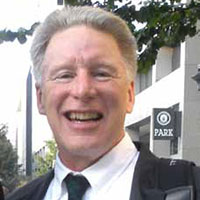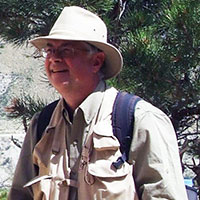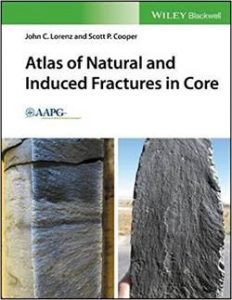Applied Concepts in Fractured Reservoirs: An In-Depth Study

 INSTRUCTORS: John C. Lorenz PhD and Scott P. Cooper MS
INSTRUCTORS: John C. Lorenz PhD and Scott P. Cooper MS
DISCIPLINE: Geoscience, Engineering, Unconventional Reservoirs, Formation Evaluation
COURSE LENGTH (DAYS): 3-5
CEUS: 2.4-4.0
AVAILABILITY: In-House
ATTEND AN UPCOMING CLASS:
Contact SCA’s Training Department at training@scacompanies.com to schedule an In-House course.
WHO SHOULD ATTEND: Geologists who need to characterize and understand fracture systems and their effects on reservoir permeability from core and outcrops, who need to be able to differentiate between natural and induced fractures in cores, and who would like to be able to predict the effects of lithology on fracturing.
Engineers who want to understand fracture permeability in relationship to the in situ stress system, the interaction of natural fractures with hydraulic stimulation fractures, and the important differences between extension and shear fractures in controlling individual fracture permeability and fracture network interconnectedness. Petrophysicists who want an understanding of the significance of different fracture characteristics on image logs and the reliability of image logs in capturing the characteristics of fractures. Seismologists who want a better understanding of subsurface fracture systems and their potential effects on seismic signals.
COURSE DESCRIPTION:
This is a hands-on class anchored with a 50-piece teaching collection of natural and induced fractures in core that students will work with during class exercises. In addition, and with pre-planning, in-house courses can utilize client core, image logs and CT scan data. The class provides insights into fracture mechanics and the origins of fractures, and uses those concepts in a very applied sense to instill an understanding of natural fractures and their potential effects on conventional and unconventional reservoirs.
Discussions and lectures include the use of and caveats for oriented cores, and the interactions between natural fractures, in situ stresses, and stimulation fractures. Course modules include discussions of image logs and their calibration with core, differentiating fractures by type and the effects of different types on reservoir permeability, and fracture types expected in different structural domains and different types of reservoirs. Students will learn to differentiate natural from induced fractures in cores, and will learn to QC a core orientation survey so that they can accurately determine fracture strikes in oriented core.
Students should come away from the class with an appreciation of the wide range of structures that fall under the basket term “fracture”, and that they do not all have the same effects on hydrocarbon reservoirs.
 Participants of this course will receive a copy of Atlas of Natural and Induced Fractures in Core, which offers a reference for the interpretation of natural and induced fractures in cores. An invaluable reference that helps geologists recognize and differentiate the many types of natural fractures, induced fractures and artefacts found in cores. The natural and induced fracture data contained in cores provides a wealth of information once they are recognized and properly interpreted. This resource provides a much-needed tool to help with the accurate interpretation of these cores.
Participants of this course will receive a copy of Atlas of Natural and Induced Fractures in Core, which offers a reference for the interpretation of natural and induced fractures in cores. An invaluable reference that helps geologists recognize and differentiate the many types of natural fractures, induced fractures and artefacts found in cores. The natural and induced fracture data contained in cores provides a wealth of information once they are recognized and properly interpreted. This resource provides a much-needed tool to help with the accurate interpretation of these cores.
The authors include the information needed to identify different fracture types as well as the criteria for distinguishing between the types of fractures. The atlas shows how to recognize non-fracture artefacts in a core since many of them provide other types of useful information. In addition, the text’s illustrated structures combined with their basic interpretations are designed to be primary building blocks of a complete fracture assessment and analysis. The authors show how to recognize and correctly interpret these building blocks to ensure that subsequent analyses, interpretations, and modeling efforts regarding fracture-controlled reservoir permeability are valid. Presented in full color throughout, this comprehensive reference is written for geologists charged with interpreting fracture-controlled permeability systems in reservoirs as well as for students or other scientists who need to develop the skills to accurately interpret the natural and induced fractures in cores.
LEARNING OUTCOMES:
- Shear and extension fractures have significantly different effects on reservoir interconnectivity, drainage anisotropy, and stimulation potential.
- Fracture permeability can be dynamic, changing with changes in the in situ stresses during production. These dynamic effects are more prevalent in unconventional reservoirs.
- Different lithologies (shale, sandstone, and carbonates) have different mechanical properties and are prone to different types of fractures with different permeability effects.
- Fracture effects on a reservoir depend on the ratio between fracture and matrix permeability. Therefore, fractures have a much greater effect on permeability in unconventional reservoirs vs conventional reservoirs.
- Image logs are important tools for fracture characterization that need to be calibrated.
- Induced fractures in a core record the in situ stress conditions, but must not be mistaken for the natural fractures that control permeability.
- Interaction of natural fractures and hydraulic stimulation fractures.
SAMPLE TOPIC FROM THE CLASS:
“The Importance of Natural-Fracture Type in Controlling Reservoir Permeability”
